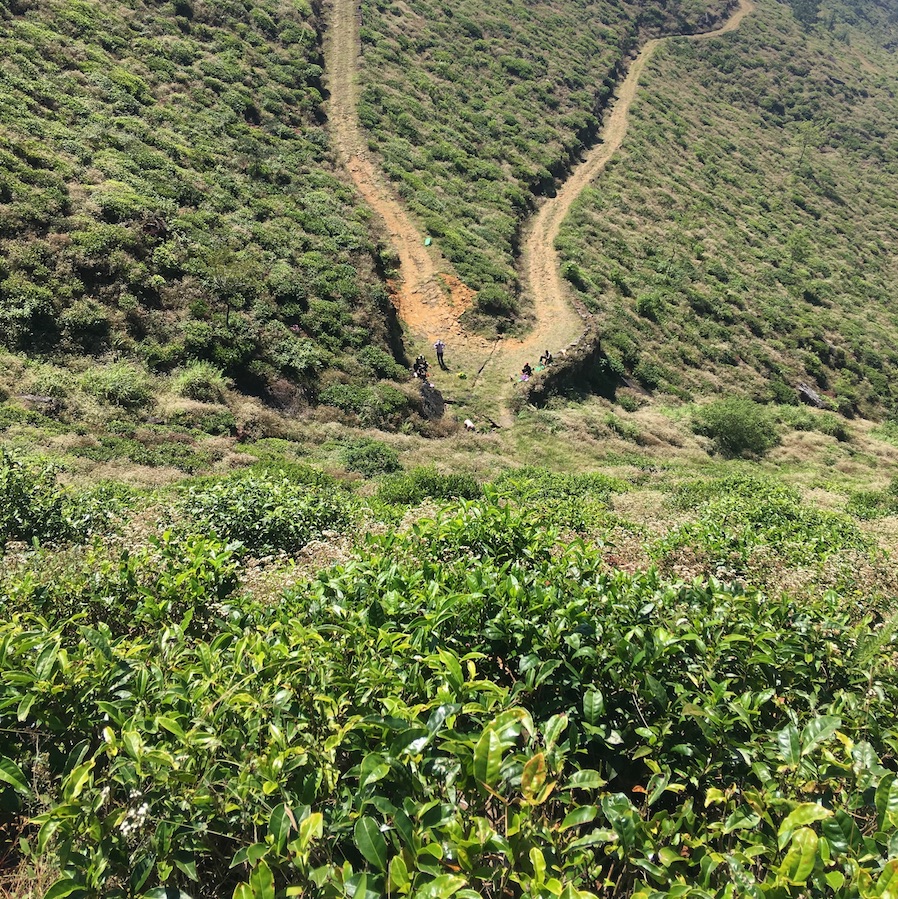Every morning at 06:30 I stumble downstairs, sleepily flick the switch on the kettle and make myself a pot of tea. It might be green tea, it might be black. I quite often spill a bit on the sideboard. A few minutes later I have drunk it and perked up.
At no time have I given a thought to how these dry fragrant leaves made their way to my pot beyond the odd cursory search for a 'fair trade' label.
This time last week I was deep in Sri Lankan hill country, hiking up steep mountainsides, rocky paths, stone staircases, through mahogany forests and the ubiquitous, far reaching tea estates that cover the mountains and provide this island nation’s major export.
Of course it was a pleasure to get a good walk in. A tramp uphill is good for the mind and body and I was looking forward to discovering new terrain but, call me naïve, I didn’t expect to come back from it thinking differently about my morning cuppa.
We went from Bambarakanda Falls up the so called “Devil’s Staircase” - a walk of 13km with an elevation gain of 1148m. I still have no real idea why it has such a terrifying name. My companion, Duminda, informed me it was the difficulty of going through the steep terrain of the tea plantations, but I have read other reasons and in truth it is a plod on a wide track, unless you take (as we did occasionally) some short cuts between the vibrant glossy-leaved bushes of Orange Pekoe.
It was very enjoyable and very hot, although we largely walked in the cooler morning air. Occasionally a thin mist slid slowly up the mountainside showing why this land is so suited to growing Britain's favourite drink. The odd cow stood its ground on the path, stubbornly and condescendingly watching us grafting our way uphill.
Overhead a crested serpent eagle circled in the still air. In the distance a column of smoke rose from the bend in a zig zag track.
The only other souls we saw were already at work. Tea workers. The women picking and the men clearing weeds - an increasingly important role since a ban on spraying glyphosates came into force.
Often perched, hunched on improbable slopes, they pick the young green tips, wearing their fingers raw. Every tiny patch of ground however tricky to reach is used for growing. There is nothing of the perfectly regimented tea hedges we come across in the Azores last year.
Duminda described having seen one woman, baby in her left hand, leaning heavily on one leg to cope with the angle of the terrain, picking furiously with her right hand: supporting her family in every way. Presumably she had to pick at double speed as she had only one available hand. The work is harsh, he told me and explained how the workers had been battling for their rights and particularly higher minimum wages, in recent times.
A lot of it I could see for myself. Apart from frequently having to walk a long way to get to the patch of plantation they will pick from on a particular day, they have a minimum weight of leaves they must pick. They work 7 hours a day, and are amongst the lowest paid workers in the land doing what appears to be back-breaking work.
We stopped a couple of times to talk to them. A lot of these workers are Tamil and my guide didn’t share a language with them but when they did understand each other one of them complained that they didn’t even get a lunch break.
“We just have a one hour tea break” he quipped, to the amusement of his colleagues and indeed us. How he can smile through this hardship I, in my comfortable tea sipping existence, struggle to comprehend. But that, I suppose, is the strength of the human spirit.
Their staple diet is the roti, a flat bread which is cooked in a skillet on the fires they light and, of course, tea. As we wended our way up the hillsides many a bend in the path had the scars of small fires, where a black pot would boil their water. You’d think they would be sick of it!
I am not sick of it. But this was a salutary tale that can probably be repeated for many a commodity we consume without a thought as to how it made its way into our comfortable lives. Time for more gratitude and perhaps some more careful consumerism.
In order to explore this part of Sri Lanka we based ourselves in the Glen Rock; a boutique hotel near Belihuloya. Thanks to the staff for their help and insight.






